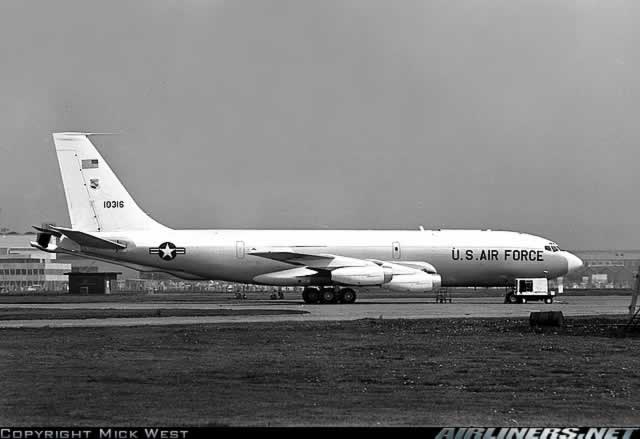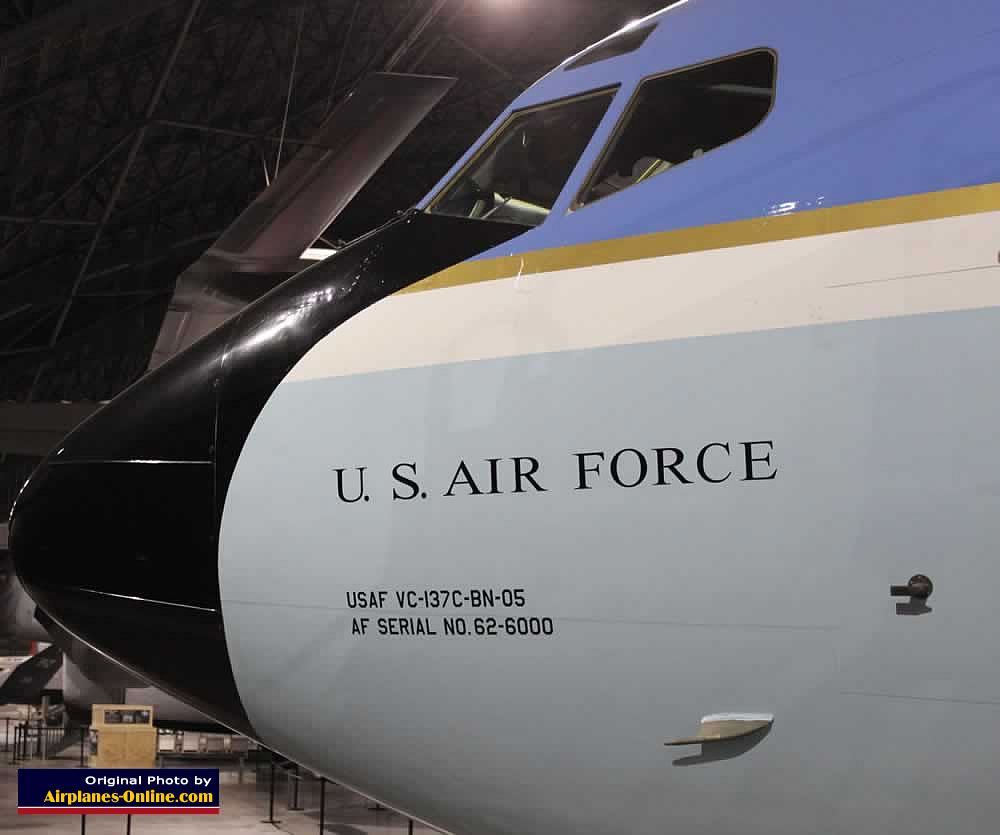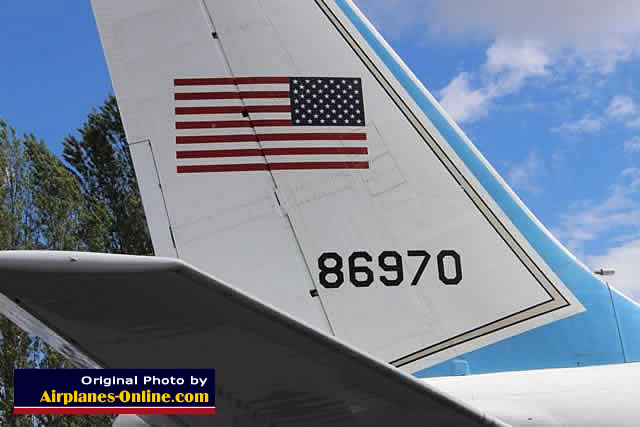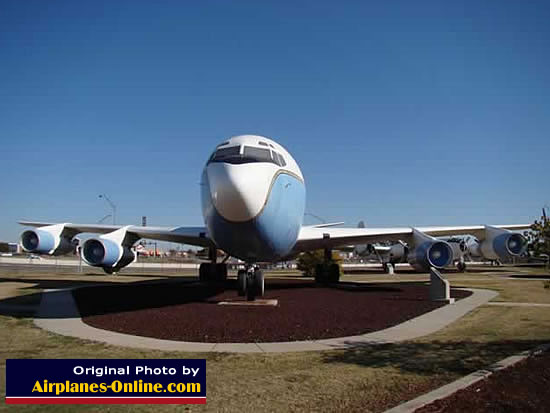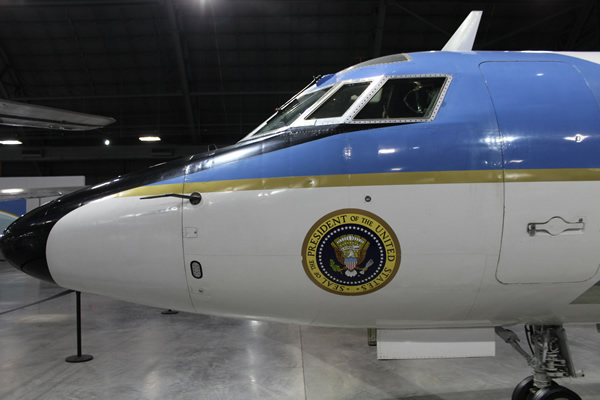U.S. Air Force One & VIP Aircraft
Air Force One
"Air Force One" is the official air traffic control call sign of a U.S. Air Force aircraft carrying the President of the United States.
The call sign was created after a 1953 incident during which a flight carrying President Dwight D. Eisenhower entered the same airspace as a commercial airline flight using the same call sign. While the President has multiple aircraft at his disposal, the call sign is moved from plane to plane as necessary.
VC-25A "Air Force One" parked on the apron at Davis-Monthan AFB in Tucson, Arizona |
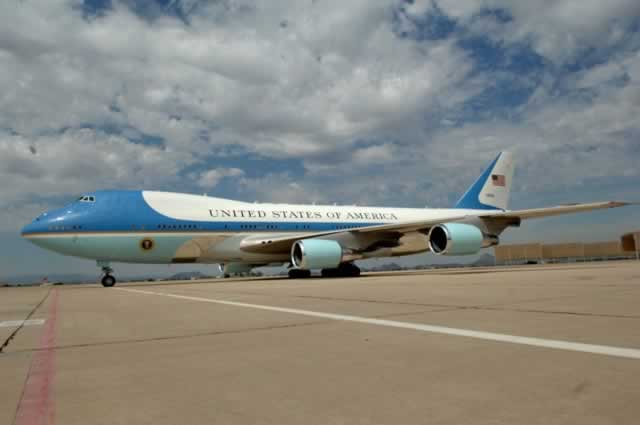 |
VC-25A: Today's Modified Boeing 747 Aircraft Used by the President of the United States
The President flies most often on a VC-25A aircraft, a modified Boeing 747-200B. Two aircraft are used, with tail numbers 28000 and 29000.
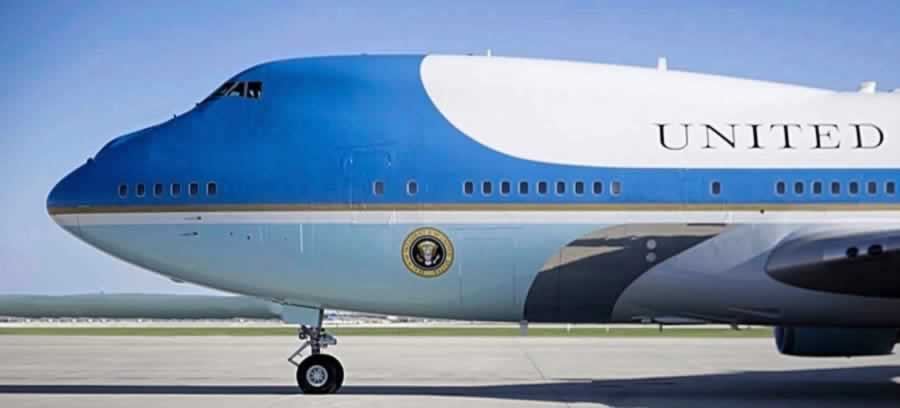 Nose section of VC-25A "Air Force One" Nose section of VC-25A "Air Force One" |
It differs from a standard 747 in a number of areas, including the state of the art navigation, electronic and communications equipment, its interior configuration and furnishings, self-contained baggage loader, front and aft air-stairs, and the capability for in-flight refueling.
It has a range of 7,800 statute miles, and fly at speeds up to 630 miles an hour at altitudes up to 45,000 feet.
The VC-25A provides 4,000 square feet of floor space on three levels, including a suite for the President that features a large office, lavatory, and conference room. The aircraft includes a medical suite that can function as an operating room, and a doctor is permanently on board. The plane’s two food preparation galleys can feed 100 people at a time.
 Tail section of VC-25A 29000 "Air Force One" Tail section of VC-25A 29000 "Air Force One" |
It is reported to contain state-of-the-art defenses that include a top secret anti-missile system and a blast-resistant outer skin.
These planes are flown by the Presidential Airlift Group, and are assigned to Air Mobility Command's 89th Airlift Wing, Joint Base Andrews (formerly known as Andrews Air Force Base, Maryland).
The initial VC-25A, tail number 28000, first flew as "Air Force One" on September 6, 1990, when it transported President George Bush to Kansas, Florida and back to Washington, D.C.
We take this time to salute and honor former U.S. President George H.W. Bush who rode tail number 29000 to his final resting place in Texas on December 5, 2018. The plane flew as "Special Air Mission 41" in memory of our 41st President.
Side fuselage view of VC-25A "Air Force One" Tail Number 28000 |
 |
VC-25A "Air Force One"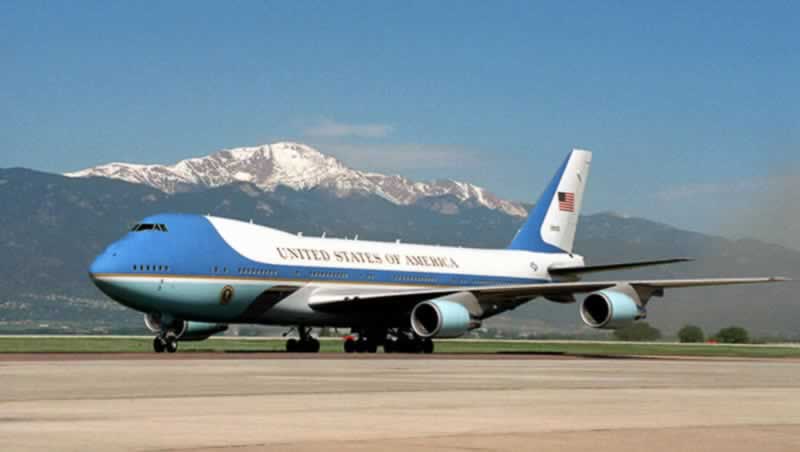 |
The Future Air Force One
In January of 2015, the U.S. Air Force announced that Boeing had been selected to build two new modified Boeing 747-8 aircraft to replace the aging VC-25A for presidential transport.
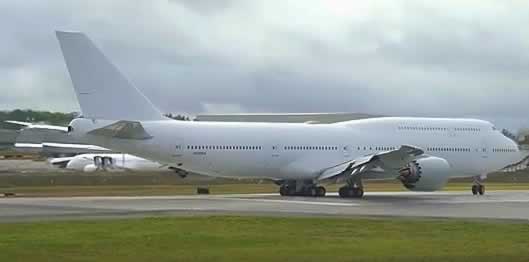 Boeing 747-8 Registration N895BA |
The new aircraft will not be in the President's inventory for a while, perhaps until 2024.
The Air Force was reported to be in negotiations with Boeing in August of 2017 to purchase two 747-8 jets which are built and which have been in storage at the Southern California Logistics Airport (SCLA) in Victorville, California since February of 2017. These aircraft were built for the Russian airline Transaero, which went into bankruptcy in 2015. The airline never took delivery of the 747s.
The tail numbers of the two 747s are N894BA and N895BA.
Boeing C-32A: Today's Alternative Presidential Aircraft
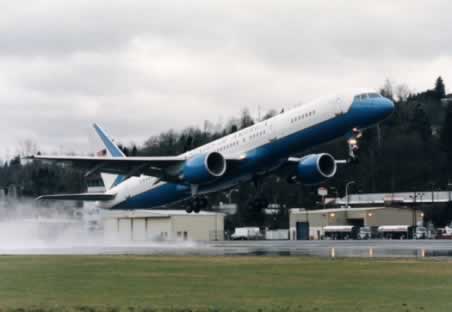 C-32A Presidential Jet at takeoff |
The C-32A is the military version of the Boeing 757-200 commercial airliner.
While sometimes used by the President, it is most frequently used by the Vice-President as "Air Force Two", by the president's wife, cabinet members, and members of congress.
The C-32A has better short-field capacity than the VC-25, making it the plane of choice when flying to airports with runways as short as 5,000 feet, too short to handle the VC-25. It can fly 5,500 nautical miles without refueling.
The 89th Airlift Wing at Joint Base Andrews took delivery of two C-32A aircraft in June 1998, followed by two more in 2010 (c/n 25044 & 28160).
U.S. Air Force C-32A, Boeing 757-2G4(WL), a specially configured version of the Boeing 757-200. Delivered in November of 1998. Registration 99-0004. Often used as "Air Force Two", and on occasion as "Air Force One". (Photo by DELEHELLE Eric) |
 |
U.S. Air Force C-32A, Boeing 757-2G4(WL) (Photo by DELEHELLE Eric) |
 |
Marine One
The official air traffic control call sign of a United States Air Force aircraft carrying the President is "Air Force One".
 Marine VH-3 helicopters with the VC-25 |
The call sign "Marine One" is used when the President is flying on any aircraft of the United States Marine Corps. These aircraft are typically a helicopter operated by the Marine Helicopter Squadron One (HMX-1) "Nighthawks" squadron.
The squadron currently operates a fleet of the large “White Top” VH-3D "Sea King" helicopters newer, smaller VH-60N "White Hawk” helicopters, and the “Green Top” CH-46E "Sea Knight".
Marine One is often used instead of a Presidential motorcade, which can be expensive and logistically difficult. More than 800 marines supervise the operation of the Marine One fleet, often seen on the South Lawn of the White House or at Joint Base Andrews Naval Air Facility in Maryland. At Andrews, it is sometimes used to connect to Air Force One for longer journeys.
Marine One in flight - Sikorsky VH-3D "Sea King" 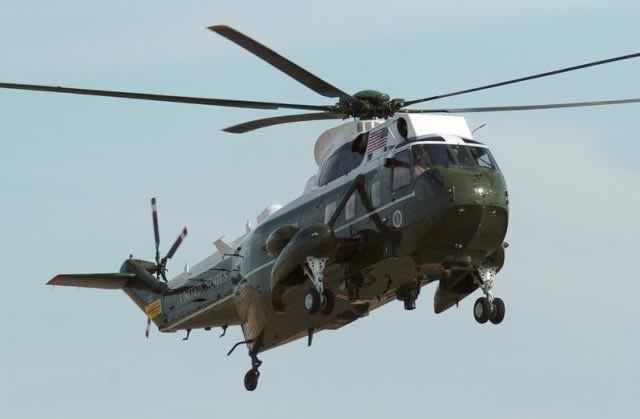 |
Early Presidential Airplanes
In October of 1910, Theodore Roosevelt became the first U.S. President to fly in an aircraft, although he was already out of office. In the coming years, prior to World War II, overseas and cross-country presidential travel was rare. Railroads remained the safer and preferred transportation mode when the President needed to travel large distances in the United States.
Franklin D. Roosevelt was the first president to fly in an airplane while in office. The first aircraft obtained specifically for presidential travel was a Douglas Dolphin amphibian delivered in 1933 which was designated RD-2 by the US Navy.
The plane remained in service as a presidential transport from 1933 until 1939. During World War II, Roosevelt traveled on the Dixie Clipper, a Pan Am-crewed Boeing 314 flying boat.
VC-54C Skymaster Presidential Aircraft
During World War II, the U.S. military and Secret Service became leary of transporting the President via commercial airliner. A C-54 Skymaster was thus converted for presidential use; this aircraft, the Sacred Cow, transported President Franklin D. Roosevelt to the Yalta Conference in February 1945, and was subsequently used for another two years by President Harry S. Truman.
The VC-54C aircraft included a sleeping area, radio telephone, and retractable elevator to discreetly lift Roosevelt in his wheelchair.
VC-54 "Sacred Cow" (Photo courtesy of the Museum of the U.S. Air Force) |
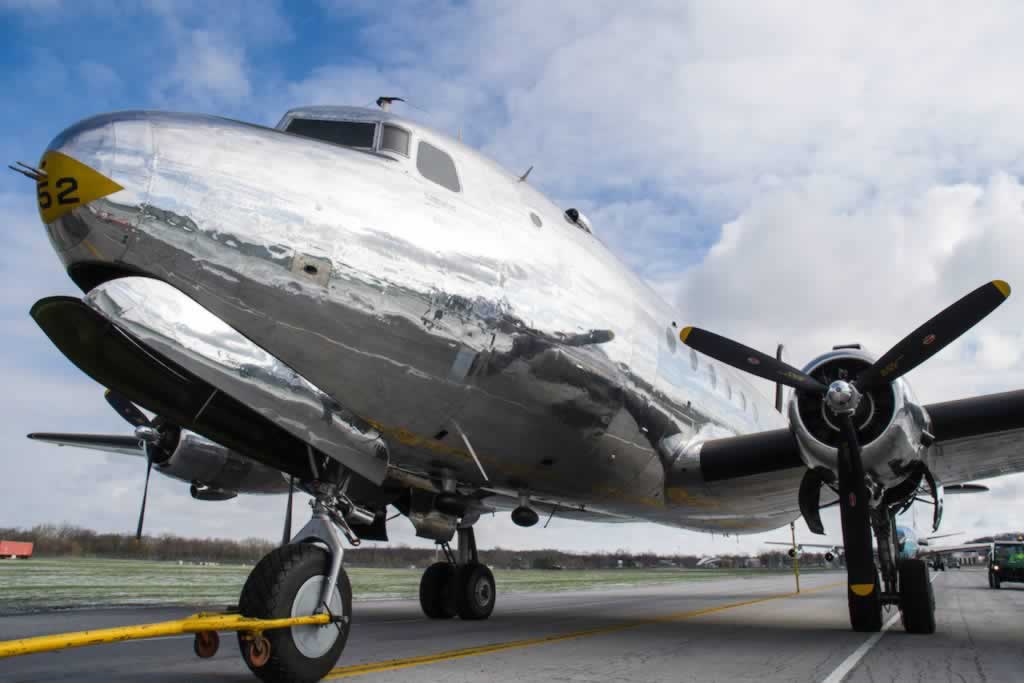 |
VC-118 in the U.S. Presidential Fleet
The C-118 is a militarized version of the Douglas DC-6 airliner. The C-118s were used primarily as passenger planes and several eventually served in the Presidential fleet.
VC-118 "The Independence" (Photo courtesy of the Museum of the U.S. Air Force) |
 |
VC-121E Presidential Aircraft
President Eisenhower introduced two Lockheed C-121 Constellations (VC-121E) to presidential service. These aircraft were named Columbine II and Columbine III by First Lady Mamie Eisenhower after the columbine, the official state flower of Colorado, her adopted home state. Two Aero Commanders were also acquired during the Eisenhower administration, the smallest aircraft ever to serve as Air Force One.
"The Columbine" presidential aircraft, Lockheed C-121 Constellation (VC-121E), Tucson (Staff Photo) |
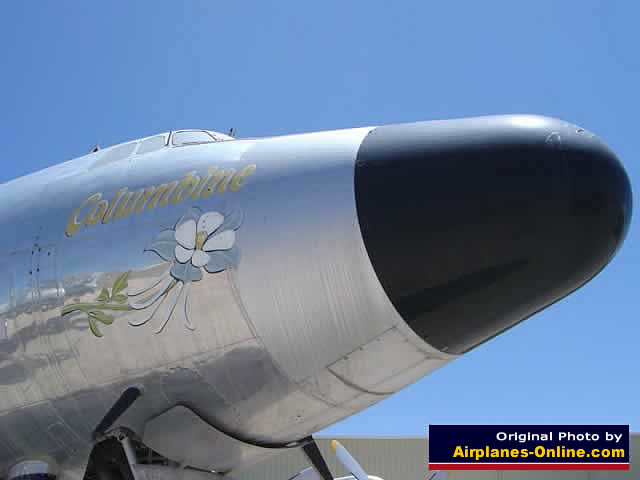 |
VC-137 Presidential Planes
The Boeing 707 and C-135 were developed in the early 1950s. Variants of the C-135 were utilized for other purposes, including presidential aircraft, such as the VC-137, also known as the C-137 Stratoliner. To supplement its VC-137s, the Air Force converted several C-135 airframes to VC-135 VIP standard models, used for staff transport within the United States.
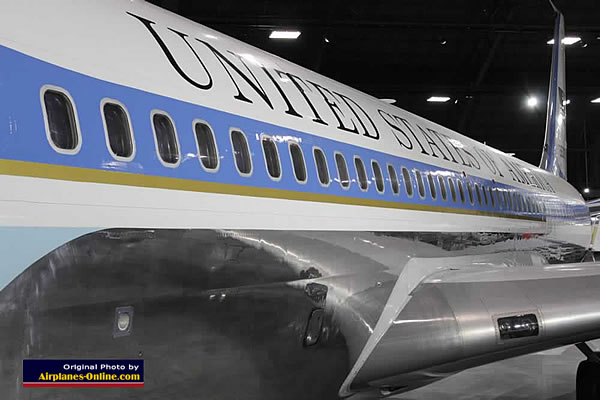 USAF VC-137C, Tail Number 26000, on display at the Museum of the United States Air Force, Dayton, Ohio (Staff Photo) |
Towards the end of Eisenhower's term in 1958, the Air Force added three Boeing 707 aircraft into presidential fleet. In October of 1962, the Air Force purchased an additional aircraft, a VC-137 designated as Special Air Mission (SAM) 26000.
American industrial designer Raymond Loewy was selected to design a new livery and interiors for the VC-137 jet. He exposed the polished aluminum fuselage on the bottom side, and used two blues; a slate-blue associated with the early republic and the presidency, and a more contemporary cyan to represent the present and future.
The presidential seal was added to both sides of the fuselage near the nose, a large American flag was painted on the tail, and the sides of the aircraft read "United States of America" in all capital letters.
VC-137 Air Force One in flight - Tail Number 27000 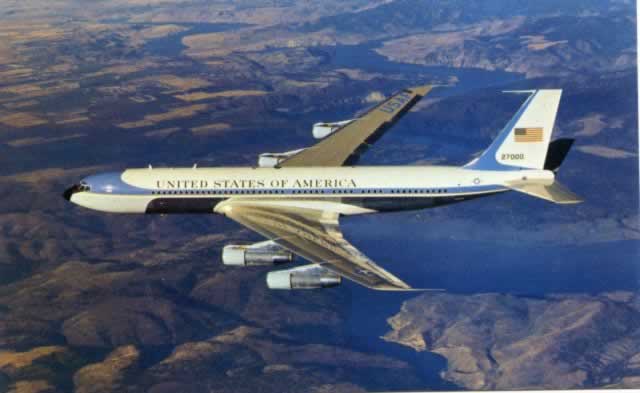 |
Eisenhower became the first president to use the VC-137 during his "Flight to Peace" Goodwill tour in December of 1959. He visited 11 Asian nations, flying 22,000 miles in 19 days.
SAM 26000 served presidents from 1962 to 1998, carrying Presidents from Kennedy to Clinton. It is on display at the Museum of the U. S. Air Force in Dayton, Ohio.
In December of 1962, another VC-137C was added to the inventory, known as SAM 27000. Today, 27000 is on display at the Reagan Presidential Library in Simi Valley, California.
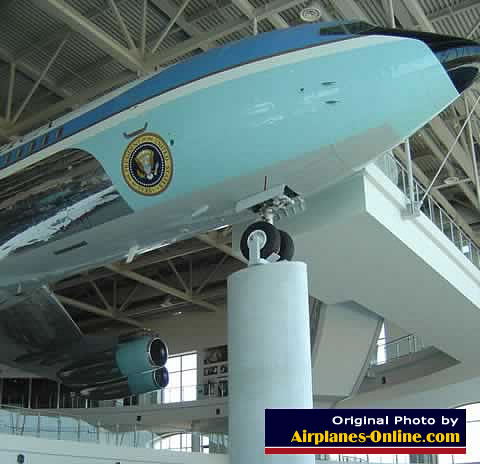 |
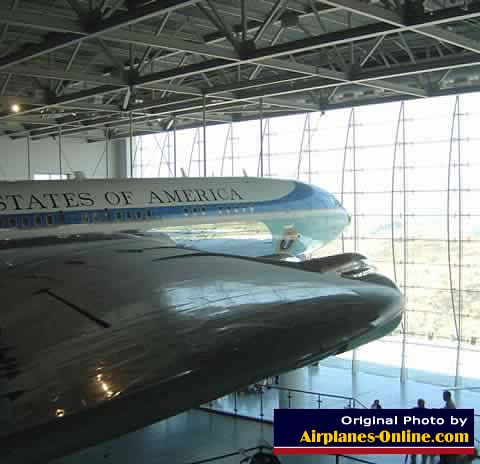 |
| Boeing VC-137C Presidential Jet - Special Air Mission (SAM) 27000 Entered service in December, 1972, ended service August, 2001. Now on dispoay at the Ronald Reagan Presidential Library in Simi Valley, California (Staff Photos) |
|
USAF VC-137C-BN-05, S/N 62-6000 at the Museum of the U.S. Air Force |
Presidential and VIP Airplane Photos
| Boeing VC-137B, "Freedom One", at the PIMA Air & Space Museum, Tucson, Arizona One of three Boeing 707-153s converted to military use, this aircraft was completed as a VC-137A by Boeing in Seattle, Washington in April 1959. |
|
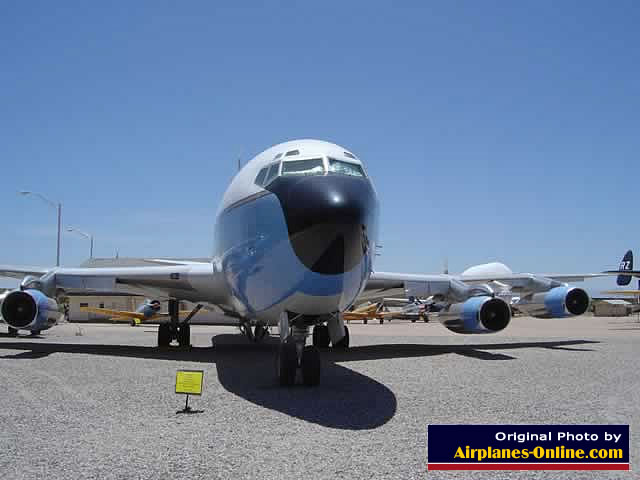 |
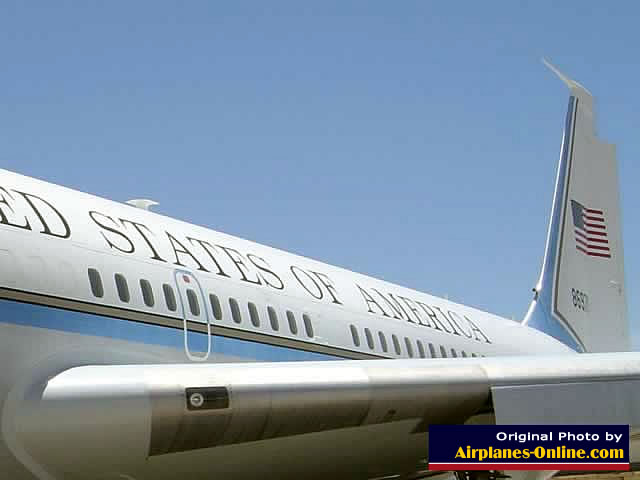 |
Boeing VC-137B Air Force One, S/N 86970, at the Museum of Flight |
||||

|
||||
Boeing C-135 S/N 91518 at AMARG, Davis-Monthan Air Force Base, Tucson, Arizona |
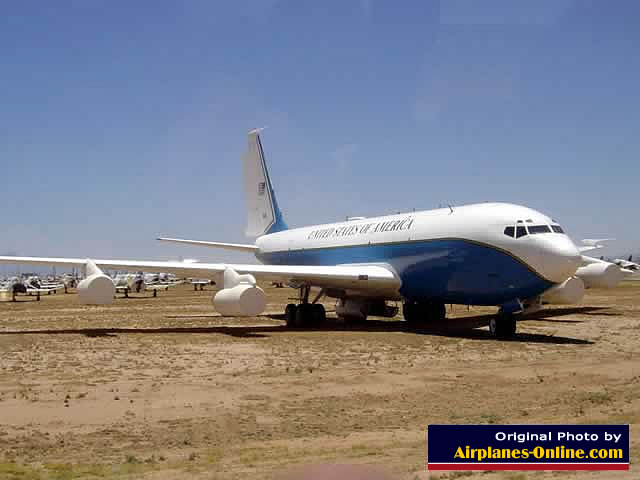 |
Shown Below: C-135 Stratolifter S/N 61-2671
at the entrance to Tinker Air Force Base, Oklahoma City Construction Number C/N 18347, a Boeing C-135B-BN, was delivered to the Air Force on April 27, 1962. It was converted to a WC-135B in June of 1965 for use by the 56th Weather Squadron. In 1974 it was again converted, to a C-135C supporting transportation of high-level military commanders in the Pacific realm until the early 1990s. At that time, the plane was flown to the Oklahoma City Air Logistics Center at Tinker AFB for mid-term corrosion control. However, 61-2671 was deemed too corroded to repair, and was ultimately placed on display at the Charles B. Hall Airpark |
||
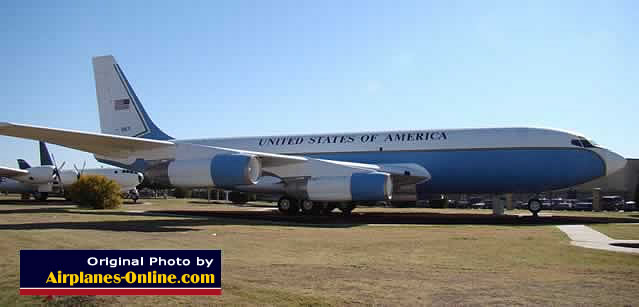
|
VC-140B Jetstar
The Lockheed VC-140B Jetstar is the military version of the Lockheed Model 1329 business jet, the first business jet produced in quantity for the civilian market. In 1961, the U.S. Air Force acquired six JetStars to transport the President, high-ranking government officials and other heads of state. Assigned to Andrews AFB, MD., the JetStars could operate from runways too small for larger USAF jet transports.
The VC-140B provided fast and economical travel for several US presidents. Whenever the president was aboard, it flew under the radio call sign Air Force One. Lyndon B. Johnson used JetStars extensively during his time both as vice president and president, and because of the aircraft’s small size, he sometimes referred to them as “Air Force One Half.”
VC-140B Jetstar, S/N 624201, used by President Lyndon B. Johnson, restored by the Hill Aerospace Museum (Staff Photo) |
 |
Nose view, Lockheed VC-140B JetStar S/N 61-2492 at the Museum of the US Air Force in Dayton OH (Staff Photo) |
Gulfstream G550
Gulfstream G550, United States of America, Tail Number 1944, at Cherbourg, France, on June 5, 2014 (Photo by DELEHELLE Eric) |
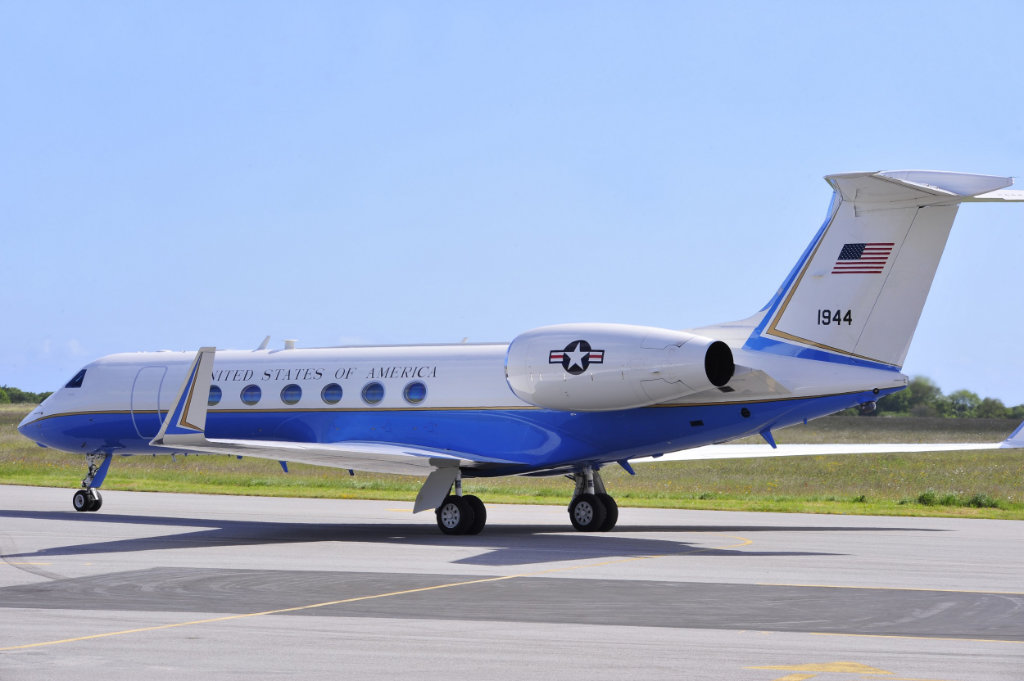 |
Tail Number 1944, Gulfstream G550, United States of America, at Cherbourg, France, on June 5, 2014 (Photo by DELEHELLE Eric) |
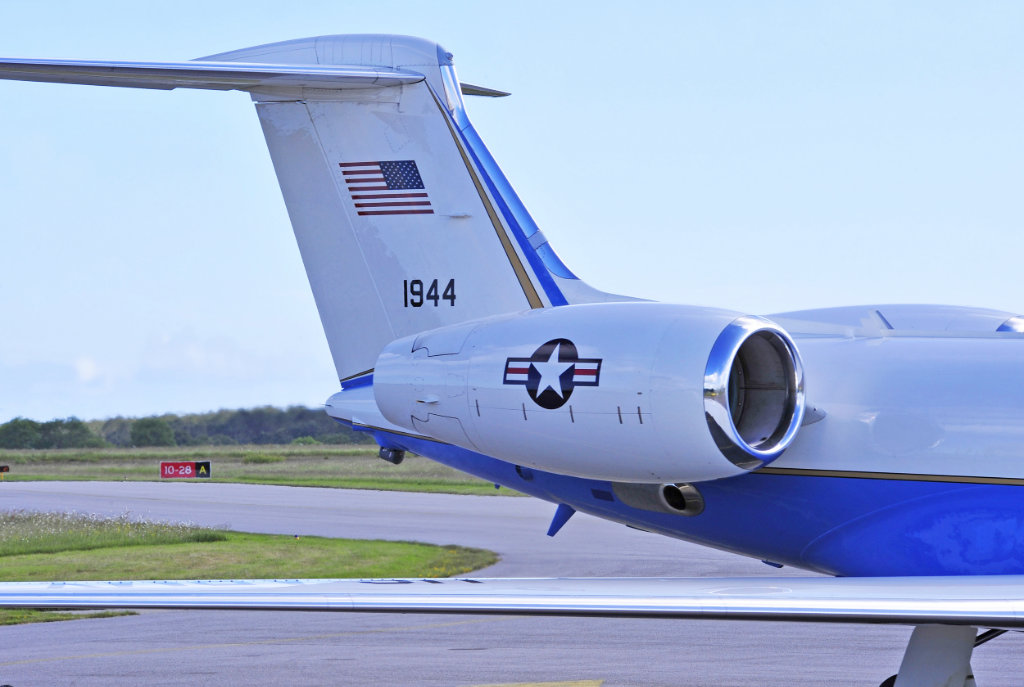 |
C-20
The C-20 is the military version of the civilian Gulfstream III and IV aircraft. It entered U.S. military service in 1983 as the replacement for the C-140B The C-20 serves as a primary lift aircraft for high-ranking U.S. military and civilian officials.
C-20G S/N 60201 at the Museum of the United States Air Force in Dayton, Ohio (Staff Photo) |
 |
C-20G US Navy - Gulfstream 4 - 165151 - msn 1199 (Photo by DELEHELLE Eric) |
 |
C-21A
The C-21 is a twin turbofan-engine aircraft used by the U.S. Air Force for passenger and cargo airlift. The aircraft is the military version of the Learjet 35A business jet.
| USAFE C-21A (Learjet 35A) 840096 (Photos by DELEHELLE Eric) |
|
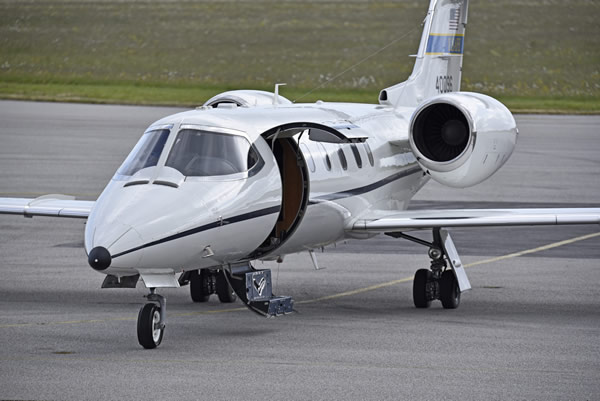 |
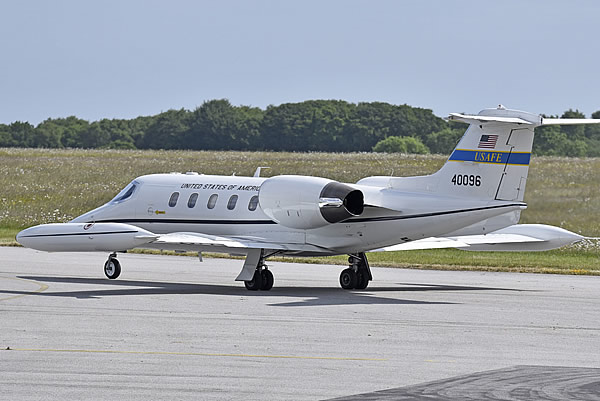 |
C-37A
The C-37A is based upon the high-altitude, intercontinental Gulfstream V aircraft, capable of cruising up to 51,000 feet. It serves as long-range command-and-control aircraft that can be used to provide transportation for high-level Coast Guard and government officials.
C-37A Gulfstream 5, msn 653, of the United States Coast Guard (Photo by DELEHELLE Eric) |
 |
C-40
The BBJ is a business jet based upon the Boeing 737-700, but with a stronger wing and landing gear from the 737-800.
The U.S. Air Force C-40 B/C is based upon the commercial Boeing 737 BBJ. The body of the C-40 is identical to that of the Boeing 737-700, but has winglets.
| U.S. Air force C-40B BBJ, a Boeing 737 variant, S/N 02-0042, msn 33500 (Photos by DELEHELLE Eric) |
|
 USAF 02-0042 msn 33500 - 2019-1.jpg) |
|
 USAF 02-0042 msn 33500 - 2019-3.jpg) |
 USAF 02-0042 msn 33500 - 2019-2.jpg) |
C-135 Military VIP Aircraft Photo
U.S. Strike Command's VC-135A, S/N 61-0316, Airborne Command Post, built in 1962
Photo taken at Heathrow Airport near the PanAm hangar, 1971
(Photo by Mick West, as published by Airliners.Net ... used with permission of the photographer)
